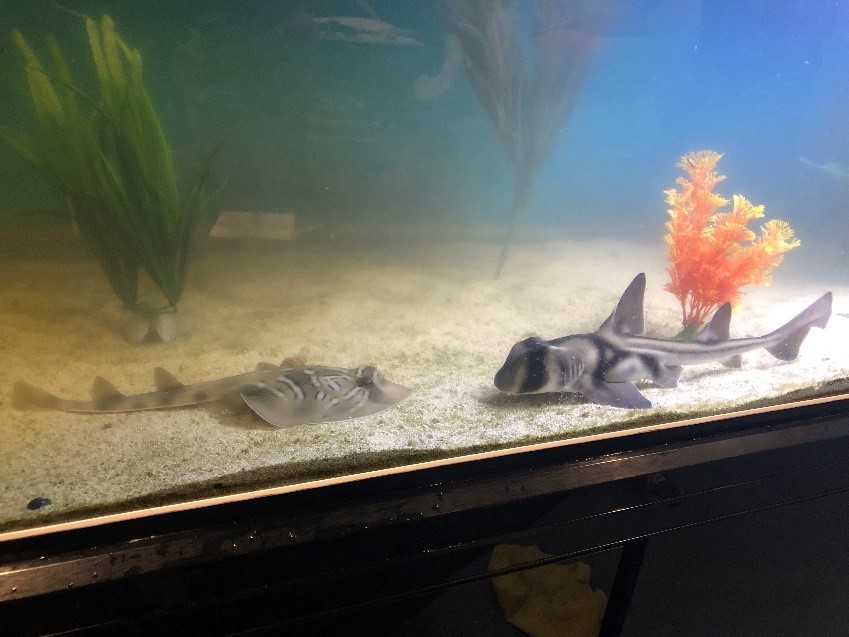
The Marine Discovery Centre is the new home to a South Australian native marine animal, a Southern Fiddler Ray. Our marine life room features South Australian marine species, which gives our visitors the opportunity to see them up close and learn more about our unique local marine life.

Southern Fidler Ray
Many South Australians are fond of the oddly adorable ray as we often see them on the ocean floor whilst meandering up and down our local jetties. This is often from afar, so we are excited to offer the experience to see these wonderful creatures up close. Some rays have venomous barbs on their tail for protection, hence the name stingray, however our Fiddler Ray lacks this barb, and instead has a beautiful mottled pattern to blend in with its surroundings.
The Marine Discovery Centre’s passion is to educate people of all ages about the importance of our marine creatures and the environment.
Stingray Facts
Stingrays are not aggressive. They are curious and playful animals when there are divers and snorkellers around, and if they feel threatened their first instinct is to swim away. As with all marine life, people must respect stingrays’ personal space, so take lots of photos and enjoy watching them gliding through the water – but from afar, and never touch the barb at the end of their tail.
Rays and skates are related to sharks and have a similar cartilage-based skeleton, and all these animals have been around longer than dinosaurs.
Rays give birth to live young, and have between two to six babies at one time. Stingrays can breathe while feeding thanks to spiracles or special gill slits behind their eyes, just the same as our Port Jackson Shark.
Our new Southern Fiddler Ray meeting our Port Jackson Shark
When resting, our Fiddler Ray will use its fins to bury itself in the sand, then oscillate its fins to swim around looking for food. Rays are slimy because they are covered in a mucous layer which helps protect them from disease and wound infection.
Quick facts
The map below shows the Australian distribution of the species based on public sightings and specimens in Australian Museums. Click on the map below for detailed information. Source: Atlas of Living Australia.

Adopt a Creature today